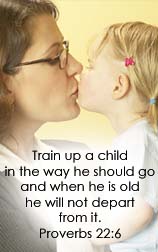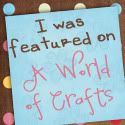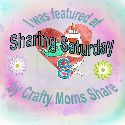Science Unit Studies for Homeschoolers and Teachers by homeschool mom Susan Kilbride, is a 201 page book filled with hands-on science activities for children ages 4-13. The first half of the book is dedicated to easier lessons for children 4-7, while the second half of the book contains lessons for older children around 8-13 years old. The author's goal was to write a book that would allow the parent (or teacher) to teach their children in a fun way, capturing their interest in the amazing world of science and the opportunities all around us.
There are ten chapters devoted to the younger children. A child will study the following topics:
- Our Senses
- The Human Body
- Dinosaurs and Prehistoric Life
- Animals
- Insects and Their Kin
- Fun with Magnets
- Stars and Planets
- Health
- Beginning Plants
- Animal Ecology
The remaining ten chapters are designed for older children. Here is what they will learn about:
- Insects
- Microscopes and Invisible Creatures
- Atoms and Molecules
- Matter
- Chemistry Fun
- Weather
- Force and Motion
- Simple Machines
- Light and Color
- Plants II
Each chapter begins with a "Materials Needed" list. These lists are very detailed and include everything you will end up using in the unit. The majority of the items can usually be found around the home or can be easily obtained at the store. Though there are some materials that are a bit harder to come by and may cost a bit more than others.
The chapter is then broken up into 4 to 8 "Parts," each of which is further divided into "Activities." These activities include discussion, observation, experimentation, role playing/pretend play, reading books, watching movies, creating crafts, plus making and eating snacks. The amount of activities varies in each part, but they are all related to the topic being studied in one way or another. A couple of the chapters in the first half of the book conclude with a review section. If you are working with the older age group, you will find each chapter concludes with a test consisting of 10 multiple choice questions.
It is recommended that you work your way through the book in order, as some units do build on others. However, the author acknowledges that homeschoolers tend to "go their own way," which of course is the beauty of homeschooling, and this book can be used out of order if the parent is so inclined.
Typical homeschooler that I am, we didn't start at the beginning of the book. All of the topics look like such fun, but it is summer time, which is a more relaxed time for us, so I chose to teach what appeared to be one of the simpler chapters first: Beginning Plants. This chapter is broken up into 8 parts, containing a total of 24 activities, the final one being a review. I chose to break each part into at least 2 days, in keeping with our relaxed summer schedule. It really depended upon how many activities were in each part.
We started with an introduction which focuses on plants in general, a quick overview, if you will. We discussed the children's favorite plants and what plants do for us. We also talked about the main parts of the plant.
After we talked about all the parts of a plant, we gathered a pile of vegetables, each one representing one part of a plant.
We started with an introduction which focuses on plants in general, a quick overview, if you will. We discussed the children's favorite plants and what plants do for us. We also talked about the main parts of the plant.
After we talked about all the parts of a plant, we gathered a pile of vegetables, each one representing one part of a plant.
Peas = seeds
Carrots = roots
Celery = stems
Lettuce = leaves
Broccoli = Flower
Tomatoes = Fruit
I then used the vegetables to make a salad.
As a review on a subsequent day, we made a veggie tray, featuring all the veggies from the salad, minus the lettuce, plus some green pepper. Amelia helped me make onion soup dip.
The children had no problem remembering the part of the plant that each vegetable represented. Even Harold, who is 3, was able to remember.
Once we understood the parts of plants, we spent the remainder of the unit focusing on one part at a time.
Seeds
We had a great time watching the lima beans expand as they soaked in water. We then cut them open to examine the parts of a seed. The children also acted out being seeds. They got to pretend to grow and then on a separate occasion they acted out how seeds move from place to place.
Roots
The children were excited to plant their own lima bean seed. We each guessed how long it would take the roots and shoots to start to grow from the seed. Within days we were pleased to see roots traveling down through the soil. Each day the children still check out their plant to see how much it has grown.
Stems
We were able to check out the inner parts of a tree trunk (the stem of the tree) because daddy had recently cut a couple of our small dying trees down. We got to talk about the pith, heartwood, sapwood, and bark.
Flowers
We didn't get a chance to press flowers as it tells us to in the book, but we did enjoy finding different flowers. They love finding flowers at the park. These pictured here are actually in the front yard of the library, so we couldn't pick them.
Unfortunately, when we transferred to our new computer, it appears pictures have been lost. I would have loved to have shown you more of the fun we had looking at roots, drawing plants with roots on the playground in chalk, and examining the inner rings of a tree trunk for example. There are so many great hands-on activities in this unit study.
I love the wide variety of activities in the Science Unit Studies for Homeschoolers and Teachers. This program is so flexible and easy to use. Yes, there are materials to gather, but once you have the needed materials, it is pretty much open and go. There is time spent in discussion before engaging in the activity. There are many topics that I plan to use to supplement our core curriculum this year.
I was excited to realize that these units could easily be utilized in a co-op setting. As there are several different activities for each topic, I could easily pick and choose some to use during class, which meets once a week.
This is a wonderful book to use as a science curriculum for homeschool families. There are a wide variety of topics to explore using mostly easy to come by materials. If it is a topic the parent is unfamiliar with, he or she can learn right along side the child by doing the experiments and observations. As I hope you have been able to tell, there is a lot of tactile learning happening during these lessons.
If you would like to take a closer look at what this program entails, you can try out the Beginning Plants chapter (for the younger students) and the Atoms and Molecules chapter (for older kids) for free. The book can be purchased for $16.95.
Don't forget to check out what my fellow Crew Mates have to say about this great science unit study book. Just click on the banner below.
If you would like to take a closer look at what this program entails, you can try out the Beginning Plants chapter (for the younger students) and the Atoms and Molecules chapter (for older kids) for free. The book can be purchased for $16.95.
Don't forget to check out what my fellow Crew Mates have to say about this great science unit study book. Just click on the banner below.






































![[PREMIO2009.png]](https://blogger.googleusercontent.com/img/b/R29vZ2xl/AVvXsEjXD_Gx-wZ9EM5hXKrEYLksEBkYfRQtmb8VDVTDG_yyLggQoFIstZsh4zszdG20KqErZicRzEhiNYLty7j3IMXJYsABqkXjr8pp-ncj71xCbpxlXGbGpZq2fTuDQqq1RMKV4DPcDBnBViA/s1600/PREMIO2009.png)




No comments:
Post a Comment
Thank you for visiting my blog today. I love to read your comments, so please leave me one if you have the time.
Blessings